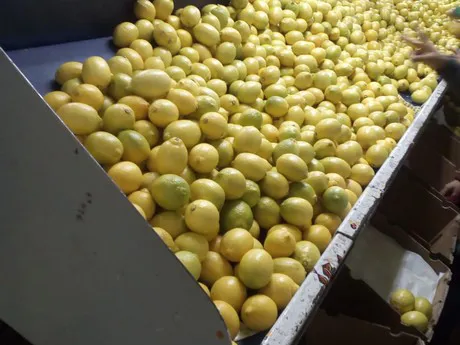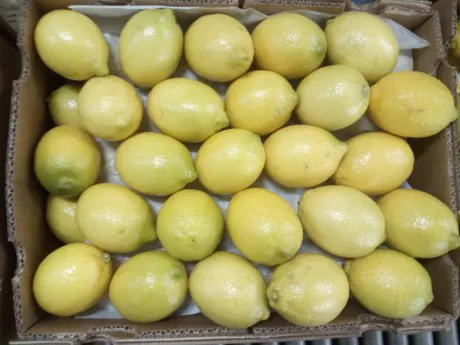The U.S. lemon market is seeing an increase in competition thanks to shifts in countries supplying the popular citrus product.
“This is a very competitive season. For the first time, Turkey is becoming an important player,” says Luis Elortondo of Salix Fruits LLC, a US fruit importer/exporter specializing in citrus and based in Atlanta, Ga. “In the past, the only fruit available in the U.S. during the northern hemisphere season was California. Then Spain was added to the mix about five years ago. Now, Turkey is also supplying good quality lemons at very competitive prices.” Elortondo notes his own company has shifted somewhat this year, adding Turkish to their offer of imported lemons.
Add to that the good crops that all of the countries are having with lemons. “The California season is better than anticipated. They thought it wasn’t going to be that good because of the hot summer but production is good,” says Elortondo.
 Interdonato lemons from Turkey.
Interdonato lemons from Turkey.
Variety switch
Spain also has a good crop as well as Turkey. But Turkey has seen rain over the last two weeks and that’s slowed imports down a little bit. “But they’re close to the end of the season too,” says Elortondo. “They’ll go till mid-February while Spain has a longer season because they have another variety called Verna. But that variety needs cold treatment for entering the U.S.” Depending on the year, the Spanish season can go until April/May.
With this amount of product in the market, prices are competitive and lower than last year. “Prices are about 10-15 percent lower than last year,” says Elortondo. “It’s competitive and demand is stable for lemons. It’s not like Persian limes for example, which have more seasonality because they’re also used for cocktails and during the summertime. Lemons have regular demand throughout the year.”
 More Turkish Interdonato lemons.
More Turkish Interdonato lemons.
Pricing stable?
Looking ahead, Elortondo believes pricing and supply will remain stable in the coming weeks, with the possibility of better prices coming once the availability of imported lemons is reduced.
Nevertheless, the availability of imported lemons in the U.S., like with many other commodities, has become very stable throughout the year. Once the northern hemisphere seasons are over, Chile comes into the picture, and last year, Argentina was allowed to enter the U.S. after years of negotiations between the two countries.
“The first year many companies were just testing the waters with Argentina by shipping a limited number of loads. But the quality was good and the prices were competitive so we anticipate a much more important season this year,” says Elortondo. “They start in April and if they keep doing a good job, they will become a key player during the spring and summer months. And it also affect the late Spanish season because the variety grown in Argentina, Eureka, is better than Verna, and it doesn’t need cold treatment.”
For more information:
Luis Elortondo
Salix Fruits LLC
Tel: +1 (770) 872-7824
luis@salixfruits.com
http://salixfruits.com/
